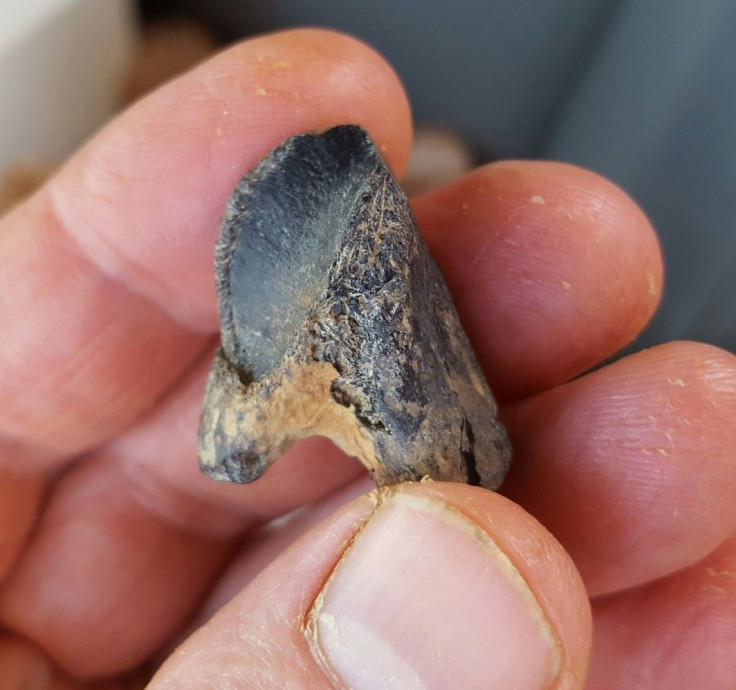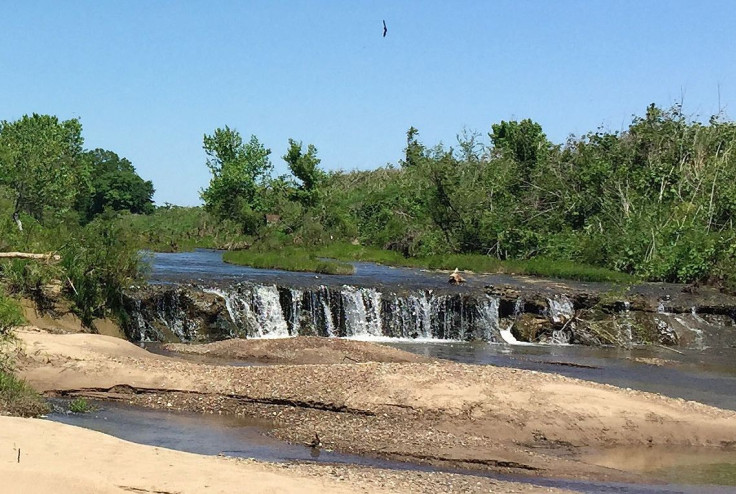First Horned Dinosaur Remains Found In North America In Chance Discovery From Mississippi

A large body of water separated the present-day North American continent into two halves during most of the late Cretaceous Period, between 95 and 66 million years ago, and because of the seaway linking the Arctic Ocean to the Gulf of Mexico, land animals on one side could not make it to the other, and would therefore evolve independently. One such genus of animals, trapped on the western half, was the horned dinosaur, whose remains have been found in western North America, as well as Asia.
However, the discovery of a tooth in Mississippi provides evidence that horned dinosaurs were present in eastern North America as well. The fossil, dated to between 66 and 68 million years ago, is from a dinosaur closely related to Triceratops, the most well-known genus of horned dinosaurs. The find also suggests that there could have existed some land connection between the two land masses thought to be completely separate at the time.

“The fossil is small, only the size of a quarter, but it packs a ton of information. The shape of this tooth, with its distinctive split root, is absolutely unique among dinosaurs. We only have the one fossil, but it's more than enough to show that an animal very similar to Triceratops-perhaps even Triceratops itself-made it into eastern North America,” Andrew Farke, a paleontologist from the Webb Schools in Claremont, California, and one of the authors of the paper announcing the discovery in the journal PeerJ, said in a statement Tuesday.
Read: ‘Ghostbusters’ Dinosaur Zuul Discovered In Montana
Triceratops, which were herbivores, appeared in North America about 68 million years ago, and its remains have been found usually near the Rocky Mountains in the United States. The find of the tooth fossil from Mississippi suggests the seaway between the two halves of the continent had at least partially receded before the dinosaurs went extinct in the mass extinction event 66 million years ago.
George Phillips, paleontology curator at the Mississippi Department of Wildlife, Fisheries, and Parks’ Museum of Natural Science and co-author of the paper, discovered the fossil in the Owl Creek Formation in northern Mississippi. That region was likely under water when the tooth’s owner was still alive but it was still quite close to land.
“The discovery is shocking because fossils of ceratopsid horned dinosaurs had never been discovered previously from eastern North America. It’s certainly the most unique and important vertebrate fossil discovery I’ve ever made,” Phillips said in the statement.

It is not known precisely when the seaway separating the two halves of the North American continent disappeared, and given the lack of preserved rock and fossils, scientists are unable to determine exactly when land animals could resume moving across the breadth of the entire continent. The discovery of this ceratopsid tooth could help improve that understanding.
The open-access paper, titled “The first reported ceratopsid dinosaur from eastern North America (Owl Creek Formation, Upper Cretaceous, Mississippi, USA),” was published online Tuesday.
© Copyright IBTimes 2024. All rights reserved.





















